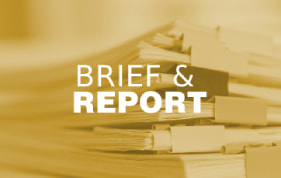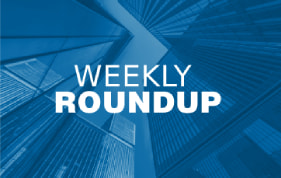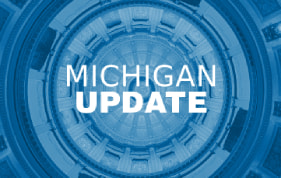This week, our In Focus, written by HMA Principal Anne Winter and Senior Consultant Aimee Lashbrook, examines American Patients First: The Trump Administration Blueprint to Lower Drug Prices and Reduce Out-of-Pocket Costs, released May 11, 2018. Over time, the pharmaceutical supply chain has become a complex ecosystem, responding to the ever-changing dynamics of new drug products, pricing strategies, health care reform, benefit design, and the regulatory environment making it, arguably, the most complicated in health care. Due to this complexity, solutions to equitably control drug pricing will take a multiprong approach that includes regulatory redesign.
1824 Results found.

Report Provides Indigent Healthcare Community Investment Analysis for Florida County
In late 2017, the Marion County Hospital District commissioned a study to define the medically indigent, identify the current volume and costs of healthcare for the medically indigent population in Marion County, describe the providers that comprise the health care safety net, summarize the investments made in the health care safety net, outcomes of this level of investment, and identify ways the community might better invest in this system. In the context of a recent reduction in federally funding to Marion County hospitals, and a decrease in the local Department of Health (DOH) funding and hospital funding to support the multi-site Federally Qualified Health Center (FQHC) in the county (Heart of Florida), community investment in the FQHC was a particular area of interest. A series of questions generated by the Marion County Hospital District guided the study and framed the report. To answer these questions, HMA analyzed publicly available data and reports, obtained quantitative and qualitative data from over 40 key stakeholders.
In terms of a definition for medically indigent, HMA recommends that Marion County consider uninsured individuals with an income less than 200 percent of the Federal Poverty Level to be considered “medically indigent.” This equates to 30,988 individuals in Marion County. This definition is used by the state of Florida for several major programs, has been approved by the federal government, and is routinely used by hospitals in defining indigent care.
HMA found that the hospitals – Munroe Regional Medical Center and Ocala Health – provide services to approximately the same proportion of Medicaid patients on an inpatient basis, and that Munroe serves a disproportionate number of Medicaid patients compared to the State-wide average in their Emergency Department and in Labor and Delivery. Both hospitals combined incur $3 million in unreimbursed charity care cost for the medically indigent in Marion county.
Heart of Florida (HOF) is the single largest primary care provider in the county and has limited behavioral health services. Ocala Community Care (the county jail health service provider) is the next largest provider of indigent primary care and outpatient behavioral health, followed by Langley Health Center that has one primary care site in the county and offers some behavioral health services. HOF’s proportion of paying patients is less (66%) than Langley (80%) and HOF provided approximately 24,000 in uninsured visits to Langley’s 5,000.
The Centers is the traditional safety net behavioral health provider in the community and is the only provider that receives state funding for serving residents who are indigent; accessibility is an issue for many given the location of the main site. The Vines delivers inpatient, residential, and partial hospitalization services; they receive no funds from the state or county and report having delivered $4 million in charity care last year. Meridian Behavioral Health in Alachua County is serving nearly 600 Marion County residents, many who report access issues in Marion County. This led Meridian to begin a telemedicine relationship with HOF to address the need for more local behavioral health services.
Marion County budgets over $9 million for indigent health care (excluding an estimated $7 million for the county jail). This is primarily for statutorily required payments for Medicaid and funding for The Centers and the Department of Health. The Marion County Hospital District funded $1.6 million in local projects in its 2017 grant cycle.
The entirety of Marion County is federally designated as a Health Professions Shortage Area; demand exceeds supply of primary care and community behavioral health. There is an average of about 2 months wait for new patients to be seen at Heart of Florida, and Munroe Medical Center has a particularly high rate of low acuity Emergency Department visits (27.4%), many of which are likely individuals who are unable to access care in the community. The Centers reports that they have instituted a walk-in system for initial assessments, and that an appointment for outpatient therapy is typically scheduled within 2-3 weeks. The Medication Clinic is also walk-in but maximum capacity is reached about one-third of clinic days such that patients arriving after the maximum capacity is reached cannot be seen that day; these patients are given priority status for the next clinic day.
In the report, we present challenges and opportunities for the safety net provider organizations individually and collectively. A particular challenge has been HOF’s continued management of the three former Department of Health primary care sites given that these sites have particularly high rates of uninsured patients ranging from 43 – 61 percent. We present an analysis that concludes that these sites fill a community need and should continue to operate unless other alternatives become available. By contract, HOF will receive $800,000 from the DOH to help support operations of these three sites, but funding is scheduled to be reduced by 20% each year over a five-year period ending on September 30, 2021. In addition, the two hospitals are planning to discontinue their contributions to the HOF. Given the funding reductions anticipated, HMA’s opinion is that the county should continue to fund HOF at the current level of $380k at least for Fiscal Year (FY) 2019. We recommend that HOF be required to develop an operational plan to present to the county in FY 2019 to detail strategies to address the loss of their other funding streams. If HOF requires continued funding from the county it should clearly articulate how that funding would be utilized and the benefit it would bring to the community.
Given the primary care and behavioral health provider shortages in the county, HMA also analyzed and highlighted where new primary care/behavioral health sites might best be located and presented justifications with supporting maps.
Finally, HMA conducted an environmental scan to identify indigent care funding models and delivery system best practices. We developed a set of recommendations for the community that identifies particular models and best practices that drive care to the outpatient setting and reduces preventable and costly hospital utilization. The recommendations also call for a process to bring key provider groups and other stakeholders together to collaboratively plan and implement strategies to strengthen the health care safety net.

Medicaid and Exchange Enrollment Update – 2017-18
This week, our In Focus section reviews updated reports issued by the Department of Health & Human Services (HHS) Centers for Medicare & Medicaid Services (CMS) on Medicaid expansion enrollment from the “December 2017 Medicaid and CHIP Application, Eligibility Determination, and Enrollment Report,” published on April 30, 2018. Additionally, we review 2018 Exchange enrollment data from the “Health Insurance Marketplaces 2018 Open Enrollment Period: Final State-Level Public Use File,” published by CMS on April 3, 2018. Combined, these reports present a picture of Medicaid and Exchange enrollment at the beginning of 2018, representing more than 74 million Medicaid and CHIP enrollees and nearly 12 million Exchange enrollees.

Webinar Replay: Electronic Visit Verification for Personal Care Services, Home Health
This webinar was held on May 24, 2018.
The 21st Century Cures Act requires state Medicaid programs to implement electronic visit verification (EVV) for personal care services in 2019 and home health care in 2023. While the aims are noble – reducing fraud and improving quality of care – the practical considerations of understanding and implementing EVV will pose a tremendous challenge for many states.
During this webinar, healthcare experts from HMA and the National Association of States United for Aging and Disabilities (NASUAD) provided a blueprint for effective implementation of EVV requirements as well as a deeper understanding of the implications of the new rules. Speakers provided an update on existing EVV programs at the state level as well as looked at best practices and lessons learned.
Learning Objectives
- Understand the specific EVV technology, implementation, and verification requirements of the 21st Century Cures Act.
- Identify EVV technologies and design models that best fit the needs of your state.
- Find out how EVV not only helps reduce fraud, waste, and abuse in Medicaid programs, but also improves the quality of care for patients needing home health and personal care services.
- Learn why more than half of states may not be able to meet the EVV deadlines imposed by the 21st Century Cures Acts.
Speakers
- Jen Burnett, Principal (Harrisburg, PA)
- Camille Dobson, Executive Deputy Director, National Association of States United for Aging and Disabilities (NASUAD)
Who Should Listen
Representatives of state Medicaid agencies; Medicaid managed care plans; personal care services, home care, and other providers; EVV vendors; and the federal government.
Click here to view the slides from this webinar: EVV Webinar 05-24-18

Electronic Visit Verification: Implications for States, Providers, and Medicaid Participants
This week, our In Focus, written by HMA Principal Jen Burnett in collaboration with the National Association of States United for Aging and Disabilities (NASUAD), summarizes key considerations and policy decisions contained in Electronic Visit Verification: Implications for States, Providers, and Medicaid Participants for state consideration as they work to implement electronic visit verification (EVV) systems in accordance with the mandate included in the December 2016 21st Century Cures Act (the CURES Act).

Webinar Replay: Partnership Opportunities for Payers, Providers and States: Supportive Housing for High Utilizers
This webinar took place on June 7, 2018.
Medicaid managed care plans, health systems, and states are teaming up with community-based organizations and housing authorities to consider a wide variety of supportive housing initiatives. Research indicates that doing so not only improves health outcomes for individuals experiencing homelessness, mental health, and/or substance use disorders, but also reduces utilization of emergency room services, inpatient bed days, and community justice involvement.
During this webinar, leading Medicaid and supportive housing consultants from HMA outlined nationally recognized evidence-based practice supportive housing models used to bend the healthcare cost curve, citing specific programs and outcomes.
Learning Objectives
- Learn how supportive housing programs can be used to provide comprehensive, integrated healthcare services for the homeless and high utilizers, improving health outcomes while reducing costs.
- Understand the basic components of evidence-based practice supportive housing models that produce improved health outcomes and cost savings.
- Find out how to partner with housing authorities and social services organizations to leverage health system funding for supportive housing programs.
- Understand the opportunity to use supportive housing targeted to those with substance use disorders and how it can improve treatment completion and long-term recovery outcomes.
Speakers
- Scott Ackerson, Principal (San Antonio, TX)
- Carol Clancy, Principal (San Francisco, CA)
- Rachel Post, Senior Consultant (Portland, OR)
- Meggan Schilkie, Principal (New York, NY)
Who Should Listen
Representatives of Medicaid managed care plans, hospitals and health systems, community-based organizations, state and federal government.
View the slides from this webinar here: Partnership Opportunities Webinar 6-7-18

Medicaid Community Engagement Initiatives: A Comparison Of Three States
This week, our In Focus is the second in a series written by HMA Medicaid Market Solutions (MMS), which has worked with a number of states to design and implement Section 1115 Demonstration Waivers that support individual state goals for member engagement and personal responsibility while complying with new Centers for Medicare and Medicaid Services (CMS) guidance.

